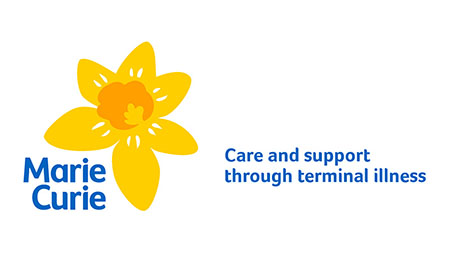Our charity is proud to be named after Marie Curie, the famous scientist.
Marie Curie is best known for discovering radium and for her contribution to the fight against cancer. She was the first woman to win a Nobel Prize and the only woman to win 2 Nobel Prizes in different subjects.
Born Maria Sklodowska, the youngest of five children, on 7 November 1867 in Warsaw, at a time when Poland was occupied by Russia, Maria had a difficult childhood. Her eldest sister died when Maria was 9 and her mother died when Maria was 11.
Despite such family tragedy, Maria studied hard and did well at school, but she was refused a place at Warsaw University because she was female. She found work as a governess and continued studying in her own time until her sister Bronwen married, moved to Paris and offered Maria lodgings.


Maria grasped the opportunity to join Bronwen in Paris, and she gained a place to study physics and mathematics at the Sorbonne University. In 1895 Maria married Pierre Curie, a scientist working in the city. She took his surname and also adopted the French spelling and pronunciation of her first name – Marie. She once joked that her biggest achievement was making people think she was French.
Marie and Pierre became scientific research workers at the Sorbonne in Paris and began their pioneering work into invisible rays given off by uranium. They discovered new chemical elements which they named polonium and radium. In 1903 they were awarded the Nobel Prize for Physics, jointly with Henri Becquerel, for their work on radioactivity.


In 1906 Pierre died as a result of being knocked down in a street accident by horses pulling a heavy load. Despite this tragedy, and being left a single mother to bring up young daughters aged 9 and 2, Marie continued working and also took over Pierre’s lecturing commitments and succeeded him as Professor at Sorbonne – an highly unusual achievement for a woman at that time.
In 1911 she was awarded a 2nd Nobel Prize, this time in chemistry for creating the means to measure radioactivity. The Sorbonne then built the first radium institute with two laboratories; one for the study of radioactivity under Marie Curie’s direction, and one for biological research into the treatment of cancer.
At the outbreak of World War I in 1914, Poland became a battleground between Germany and Russia, so Marie was completely cut off from her family members still in Poland. She decided to help her adopted country of France, and she became a fundraiser.
She knew from her scientific research that x-rays could be used to provide better treatment for wounded soldiers by locating fractures, bullets and shrapnel embedded beneath the skin, so she toured Paris asking businesses for money to develop x-ray facilities within hospitals.
Then she worked with the Red Cross and developed 20 mobile x-ray units mounted inside vehicles to go to casualty clearing stations close to the battlefields, and she trained radiographers to operate them, including her eldest daughter, then aged 17.


Years of exposure to radiation through her work took its toll on her health. She had suffered from radiation burns to her hands and from other effects of radiation sickness for many years and on 4 July 1934, at the age of 66, Marie Curie died of pernicious anaemia.
She left 2 daughters, Irene and Eve.
Irene also entered the field of scientific research and with her husband Frederic Joliot was awarded a Nobel Prize and credited with the discovery of artificial radiation.

Marie and Pierre Curie are buried in the Pantheon, the Paris mausoleum reserved for France’s most revered dead. There are statues of Marie Curie in both Paris and Warsaw, and a Marie Curie museum now stands on the site of her childhood home in Warsaw. She is also still featured on Poland’s bank notes.
Irene’s daughter, Hélène Langevin-Joliot is a famous nuclear physicist and in March 2015 Hélène visited the Marie Curie Hospice in Hampstead, London to see some of the work being done by the charity named after her famous grandmother.


